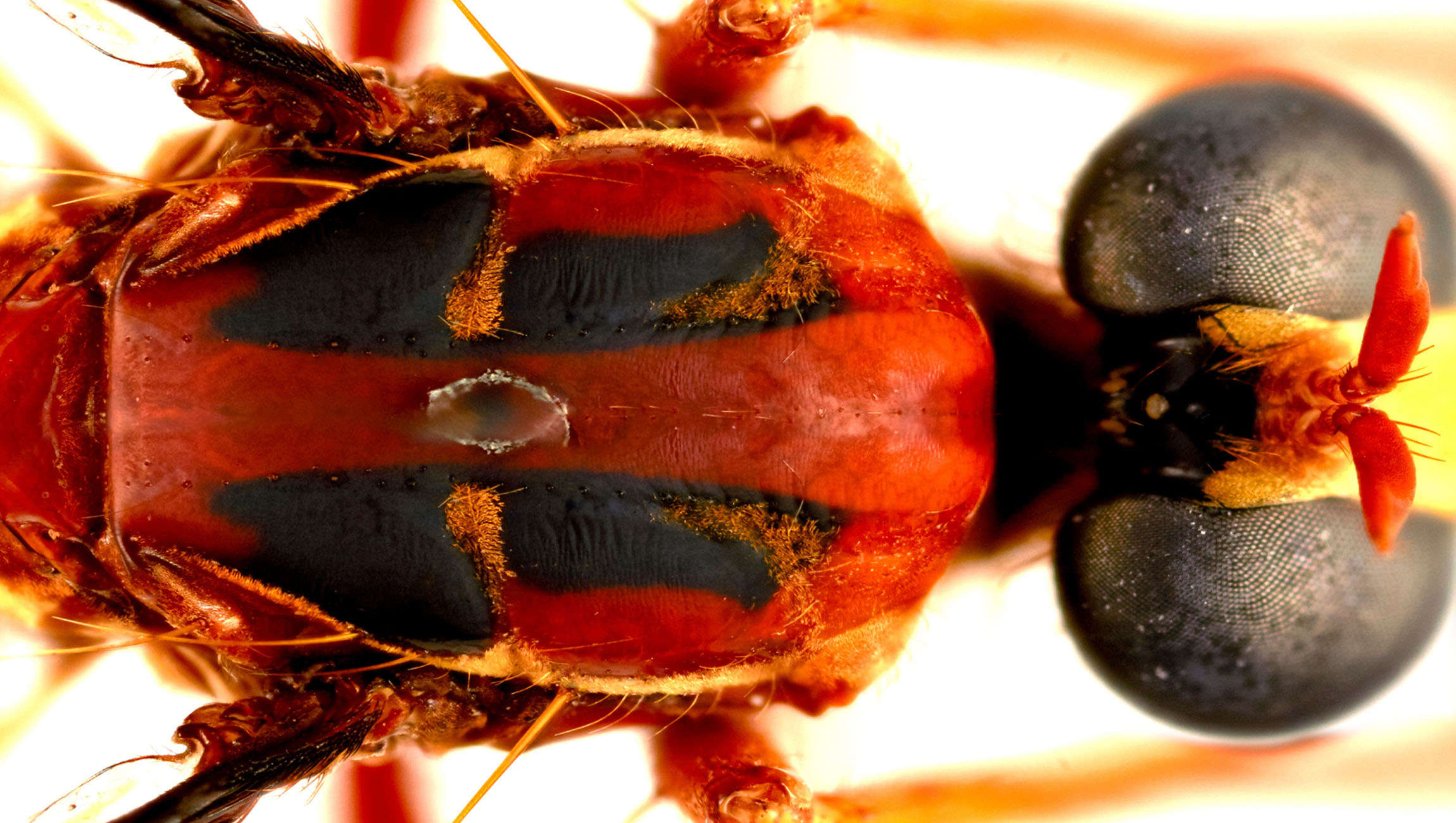Create a free profile to get unlimited access to exclusive videos, sweepstakes, and more!
Vigilante superhero flies discovered in Australia appropriately named after Marvel legends

You can be a fly, or you can be a badass superfly. Assassin flies are not an insect you want to mess with, especially if you’re on the menu. They will attack any insect they think they can take down. Like a superhero on a vigilante operation or a supervillain sneaking up on enemies, they ambush prey and inject it with venom that liquefies its insides.
It gets better. Newly discovered species of these flies, which already sound like they buzzed out of comics, have been named after Thor, Loki, Deadpool, Black Widow, and — of course — Stan Lee.
“The entire lineage they belong to, maybe having 5,000 species worldwide (family Asilidae), are aggressive predators of other insects,” CSIRO entomologist David Yeats, who led a study recently published in Austral Entomology, told SYFY WIRE. “They eat other insects to feed and survive. This particular group, with their bold color patterns and often “waisted” abdomens, are probably mimicking wasps, so they don’t get eaten themselves by birds.”
This must be how insects do cosplay. The fly version of Thor has officially been named Daptolestes bronteflavus, meaning “blond thunder”. Loki is (appropriately) Daptolestes illusiolautus or “elegant deception.” Deadpool is Humorolethalis sergius, “lethal humor”, and Black Widow is Daptolestes feminategus, “woman wearing leather.” And Stan Lee? Daptolestes leei, of course.
These creatures have definitely earned their names. Deadpool’s namesake is red with markings on its back that resemble the merc’s iconic mask. Black Widow resembles the heroine’s slick leather style as much as something non-human possibly can. Stan Lee’s has the white whiskers of its legendary namesake. Thor’s fly has a majestic gold thing going, and Loki’s, which echoes this costume, is black with gold accents and burdened with glorious purpose.
"Like Deadpool, they’re ambush predators," CSIRO entomologist Isabella Robinson told SYFY WIRE. "They’ll find a perch on a branch or a leaf, lie in wait for their prey to fly past, and then them on the wing. They share Black Widow's skill at subterfuge, able to go undercover as other types of insects. The Daptolestes species, with their tapered waists, are wasp mimics. Like Thor, robber flies are powerful aerial hunters able to take on prey as large or even larger than themselves. Thor’s takedown of the Chitauri Leviathan comes to mind. The Loki fly is deceptive and incredibly elusive. They lack the distinctive facial marking of the other related species, making them harder to identify, and very few specimens have been captured and added to our natural history collections.
Also like Loki, these tiny assassins start young.
“Interestingly, their larvae live in the soil and also attack other insects there as well. The larvae’s mouthparts are fearsome feeding structures,” Yeats said.
These may just sound like more bugs that get squashed underfoot, but many, like soldier flies that recycle nutrients important for maintaining balance in ecosystems, keep the environment alive. Others have the potential to save human lives. A new species of spider wasp the team discovered (however gnarly that sounds) has venom that could be chemically duplicated and incorporated into treatments for Alzheimer’s and epilepsy. There could also be medical applications for assassin fly venom.
Yeats’ team also discovered a range of other flora and fauna, including a carnivorous sponge two new species the Lobelia plant. Now you know where J.R.R. Tolkien got the name for Bilbo Baggins’ annoying cousin-in-law Lobelia.
We’re just waiting for the insect versions of Ant-Man and The Wasp.



























